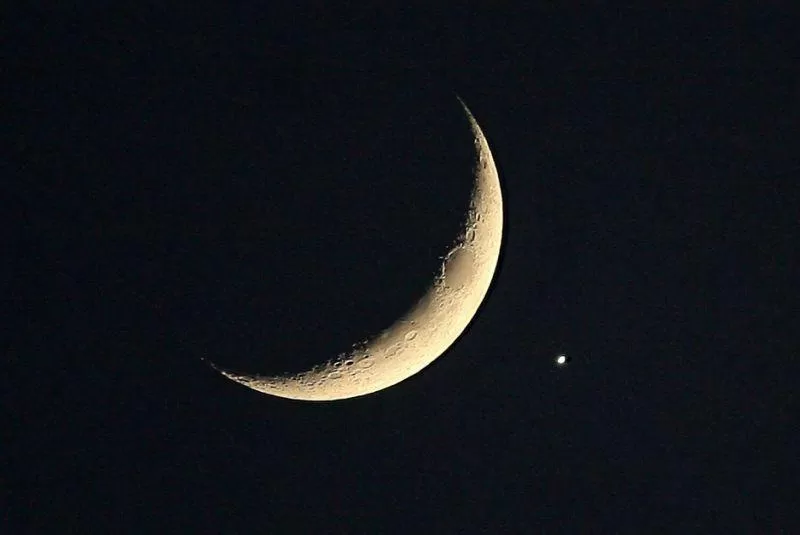One way to have fun at home is simply to step outside and look to the heavens! Now and for the next month, you’ll see something extraordinary. Venus, also known as The Evening Star, is so unusually high and brilliant, it’s safe to say that you’ve never seen it looking better, not in your whole life.
So step onto your backyard, deck, or roof, and look up at the sky. Venus is that unbelievably dazzling “star” you’ve probably already noticed. The thing is, while the Evening Star shows up every two years or so, it’s usually rather low, and normally not this bright. But right now it’s as high as it can get – about halfway up the sky as darkness falls. And it’s so bright it will actually make you cast a Venus shadow on a sheet or snowy surface if you’re away from all artificial lights.
Also called our Sister Planet because its diameter is just a few hundred miles less than ours, Venus ventures nearer to us than any other major celestial body other than the Moon. And although it’s been visible after sunset since the autumn, it is now at its very best. But timing is everything, and this show has a limited run, so let’s run down its best upcoming performances.
Venus and the Moon, March 27 to 29
Start with this coming weekend, March 27 to 29. That whole time, but especially Saturday night, it is joined by the crescent moon. This will be a lovely sight for just the naked eye, but it will be simply stunning through binoculars. Dig out that old pair you’ve got lying in a drawer somewhere, and point them toward the west this weekend. The beauty of the Moon and Venus pairing will sweep you away, but now look just above them. Wow – right there hovers a gorgeous star cluster. For, just above those two brightest luminaries of the night sky floats the famous Seven Sisters or Pleiades star cluster. And the best way to view them is not through a telescope, but merely those ordinary binoculars.
Venus and the Seven Sisters, April 3
So this very weekend watch Venus meet the moon, and observe the Pleiades floating just above them. But then keep watching as, night by night, Venus inches closer and closer to the Seven Sisters. On Friday night, April 3, the dazzling Evening Star will actually parade in front of that star cluster. Then those binoculars will be your magic accessory, and will gift you with an unforgettable sight. That’s coming up late next week.
And still the Venus show isn’t over. Since we’ll almost certainly still be locked up at home a month from now, we’ll find it easy to keep observing the Evening Star as, unlikely as it seems, it gets even brighter in mid-April, all the while still hovering at its unusually high-up elevation as the first stars emerge each evening.
But this is too good to last forever. Venus is normally a fairly low-down object and this is her highest-up, most brilliant apparition since 2012, but in May she will rapidly sink lower and lower as seen each evening, and will vanish into the Sun’s twilight glare at month’s end.
When to See Venus, Again
So the time is now, and during the next month, whether you observe through binoculars or use your eyes alone.
Just be sure to look at around 7:30 or 8 PM each evening. Starting now, Venus is so dazzling, she’ll even cast your shadow onto a spread-out sheet or a snowy surface if you’re away from all artificial lights.
Venus and her Dog
Actually, the Evening Star is enjoying a rare positioning not far from the sky’s brightest true star, the famous Sirius, the Dog Star. So any evening, look far to the left of Venus and find the brightest star in that part of the sky: you’ll see that it’s distinctly blueish compared to the pure white of Venus. But the real reason to make the comparison is not so much the color contrast, but to see that Venus is an extraordinary fifteen times more brilliant than the Dog Star.
In terms of brightness, there’s no comparison. So between its unusually great height and the maximum brilliance it displays all during the next month, it’s no exaggeration that we are seeing the most stunning Evening Star ever.

